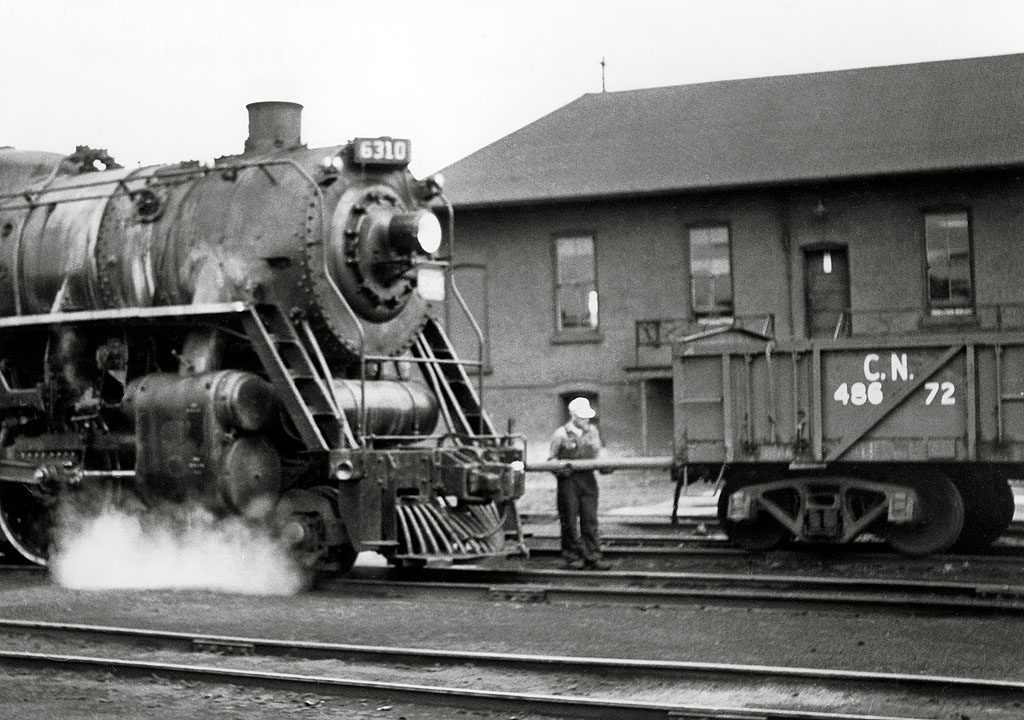
A Canadian National worker moves a car using a pole on the pilot of CN No. 6310 in 1958. Gordon B. Mott, Louis A. Marre collection Q When did railroads stop using poling pockets seen at all four corners of freight cars and engines? – John Bronn, Eagle, Alaska A Poling was the once common […]
Read More…
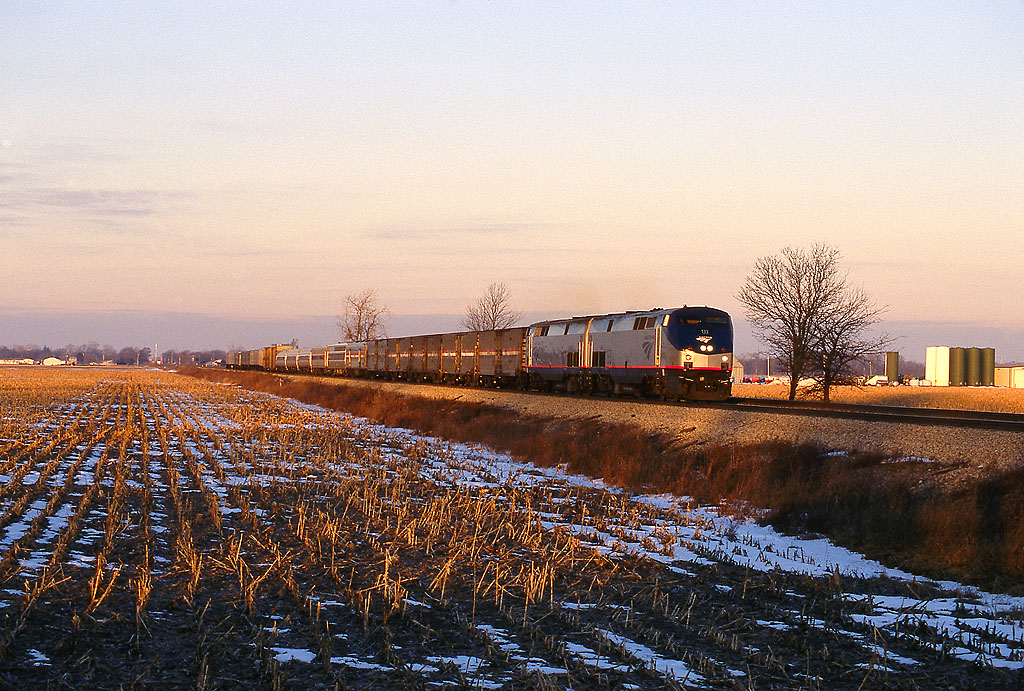
Amtrak’s ‘Three Rivers’ passes through Deshler, Ohio, in January 2003. Brian Schmidt Q While watching a DVD recently, I noticed an Amtrak train heading west through Deshler, Ohio. In what years did Amtrak go through that piece of Ohio? – David Harnisfeger, Findlay, Ohio A Amtrak operated on the former Baltimore & Ohio main line […]
Read More…
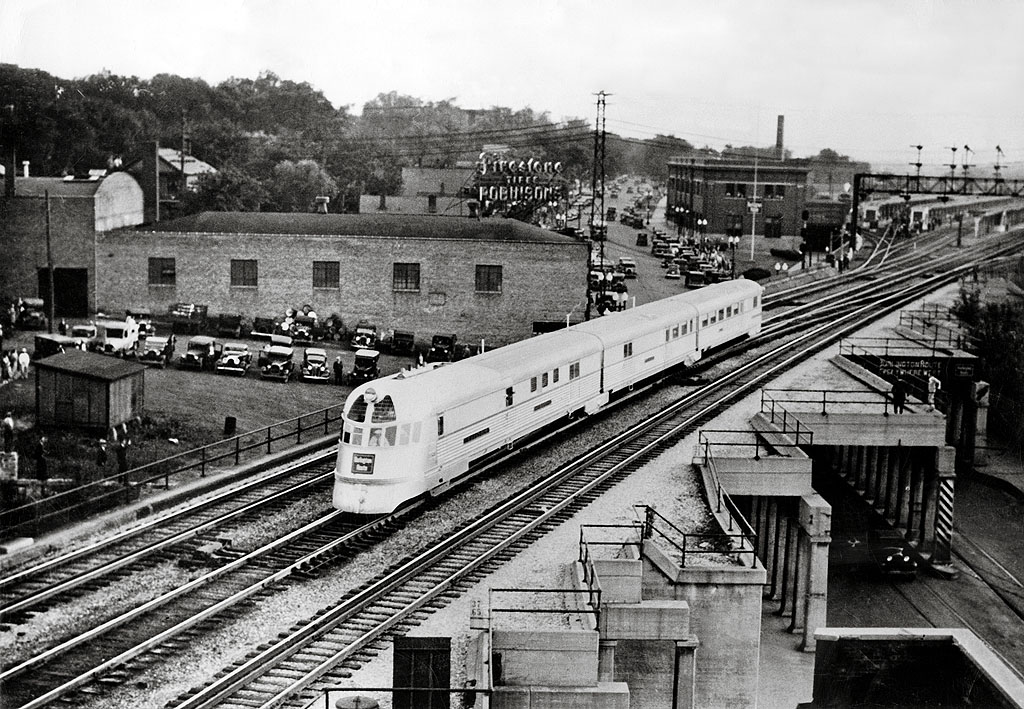
The Burlington ‘Zephyr’ as seen in Aurora, Ill., on May 26, 1934. Its nonstop run may have included slow spots. CB&Q Q In 1934, the Chicago, Burlington & Quincy ran the Zephyr from Denver to Chicago nonstop. How did they do this without changing crews? Did they have crews on-board for each subdivision and change […]
Read More…
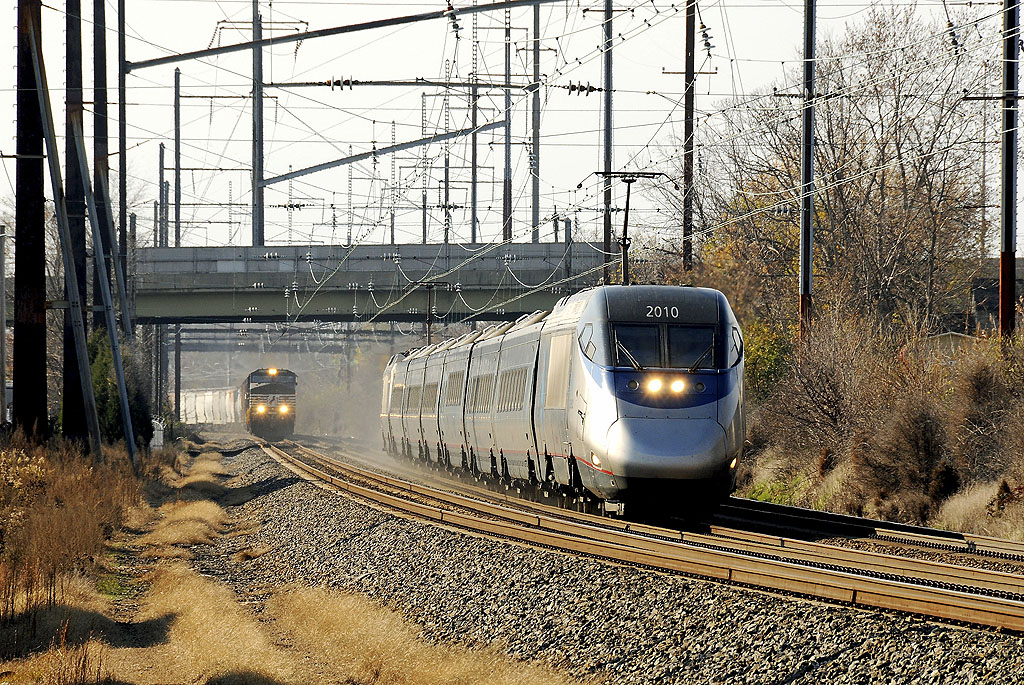
Extra tall fences (seen on the overpass in the background) often protect electrified lines from road debris. Michael S. Murray Q I have driven over the Northeast Corridor and have seen guardrails on the bridge get higher over the tracks themselves. Why is that? – Dan Wescott, Louisburg, N.C. A The primary reason higher barriers […]
Read More…
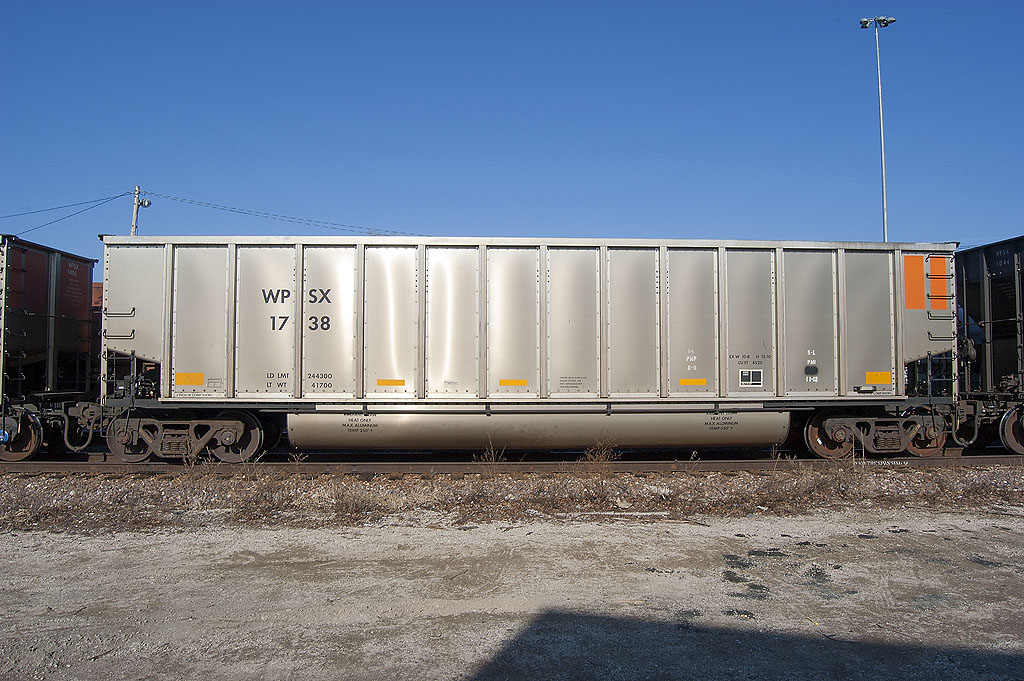
This coal hopper, seen in Butler, Wis., has a main body built from aluminum and a center sill made of steel. Freight-car makers use non-conductive materials to separate the metals and prevent galvanic corrosion. Steve Sweeney Q There are aluminum-body Talgos and aluminum-body coal cars, both with steel center sills. High school chemistry teaches that […]
Read More…
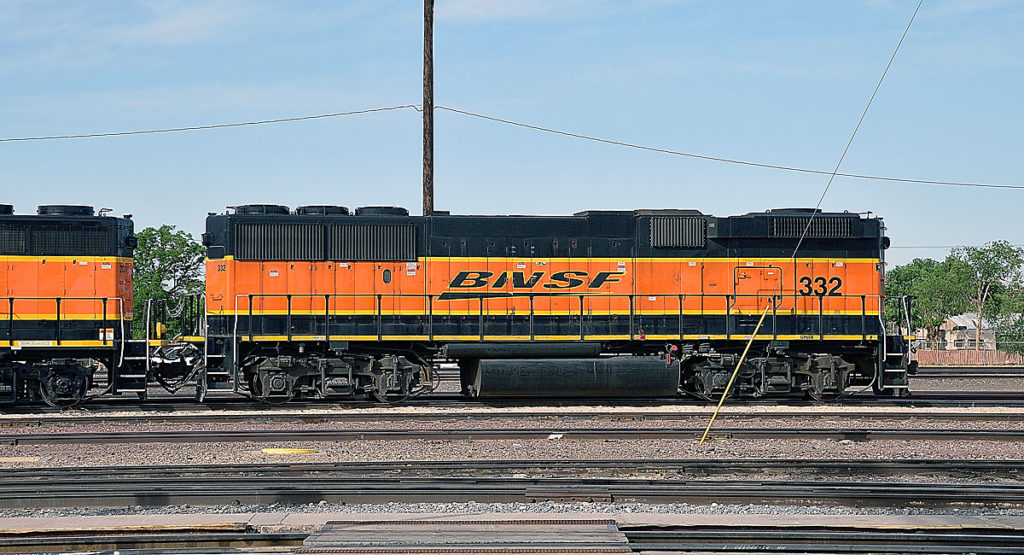
Santa Fe management ordered 23 GP60B units in 1991 for road service. Today, these four-axle veterans still ply BNSF Railway rails, but mostly on local jobs. Bob Miller Q I was watching railroad videos of the 1990s and saw locomotives without cabs in various consists. I rarely see these units on the main lines of […]
Read More…
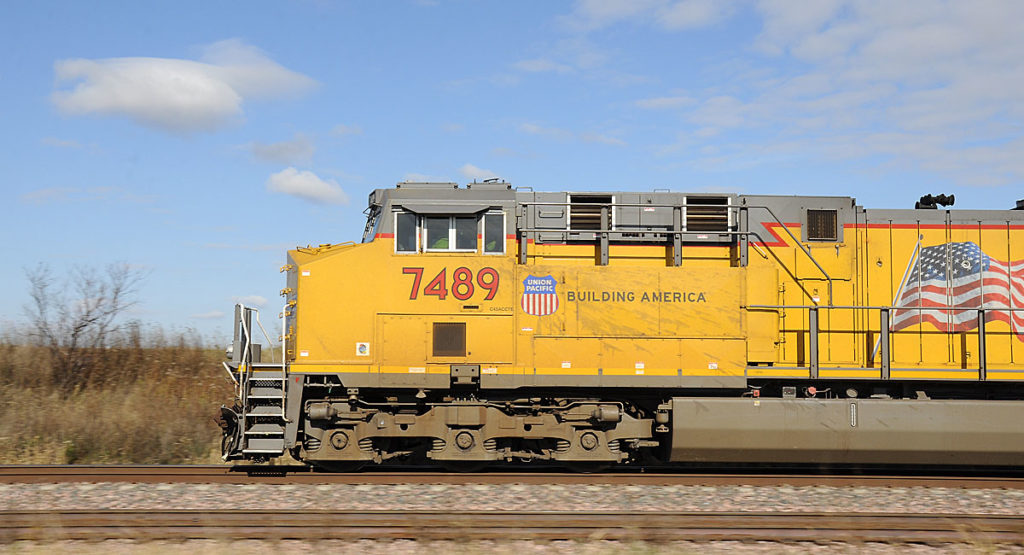
Electric and diesel locomotives’ top speeds are governed by gear ratios and safe operations, like this Union Pacific westbound near Franklin Grove, Ill. Brian Schmidt Q What determines the theoretical top speed of a diesel locomotive? Is it the gear ratio? What other factors enter in? – Mike Pedersen, North Berwick, Maine A The maximum […]
Read More…
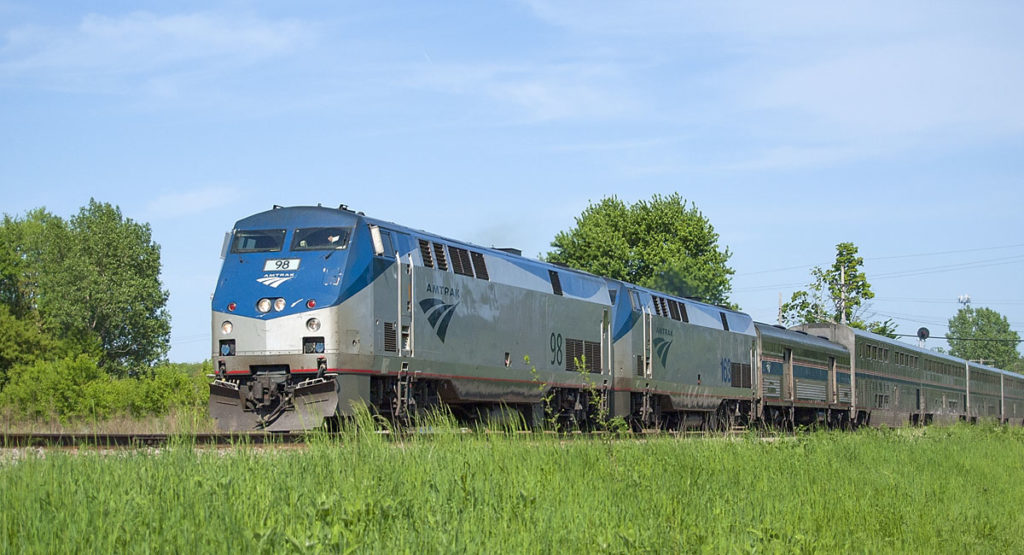
Amtrak’s ‘Empire Builder’s consist will vary, but the number of trainsets for a route depends on schedules. Here it is westbound in June at Duplainville, Wis. Steve Sweeney Q For the past few years I have been trying to figure out how many trainsets are needed for a given train such as the Empire Builder. […]
Read More…
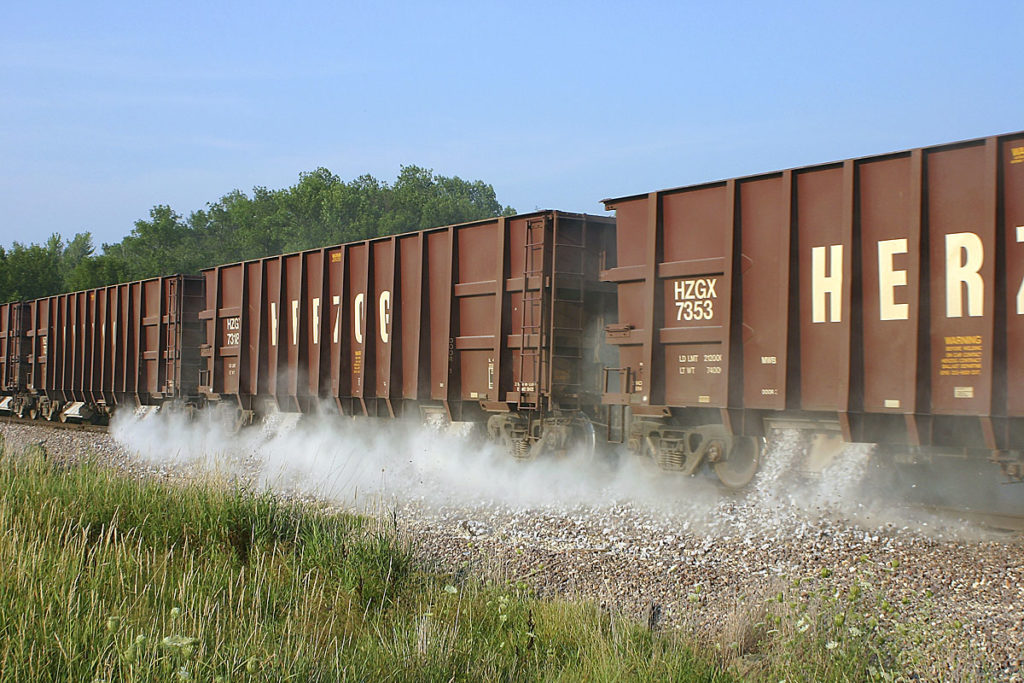
Herzog freight cars are often seen in track maintenance and repair projects, such as this ballast train. Mike Yuhas Q I have seen private freight cars on the major railroads carrying the logo and letters for “HERZOG.” Who owns them and what do they carry? – L. Frank Herman, Springfield, Ill. A You likely saw […]
Read More…
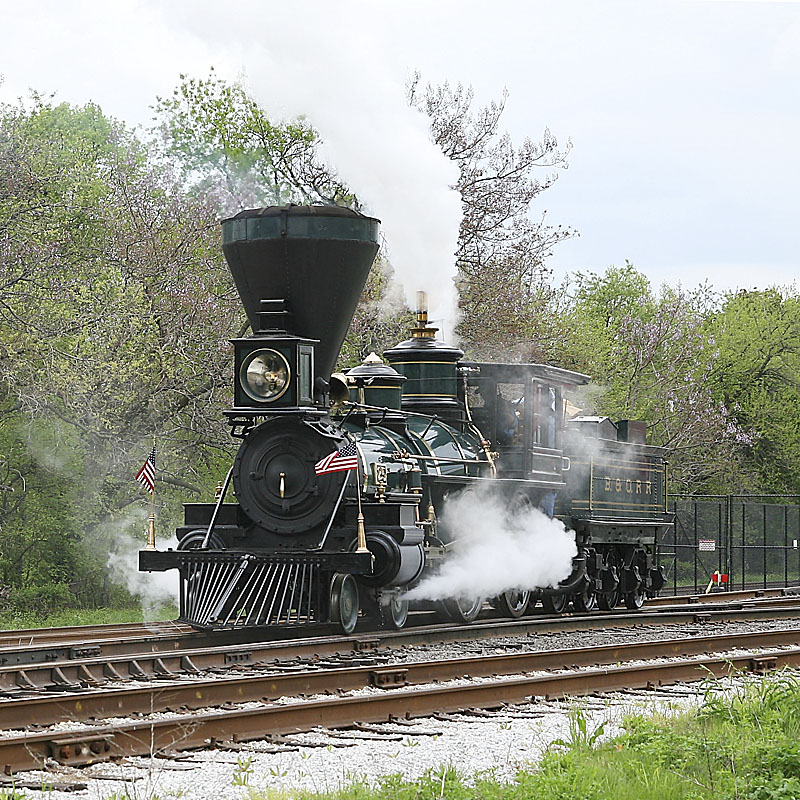
From the beginning of U.S. railroading, each railroad chose its own whistles that varied from high to low in pitch. Alex Mayes Q Have American steam engines always used a low-pitched or bass whistle, instead of a high-pitched whistle? – James Kelty, San Anselmo, Calif. A Steam whistles chosen by American railroads were almost always […]
Read More…
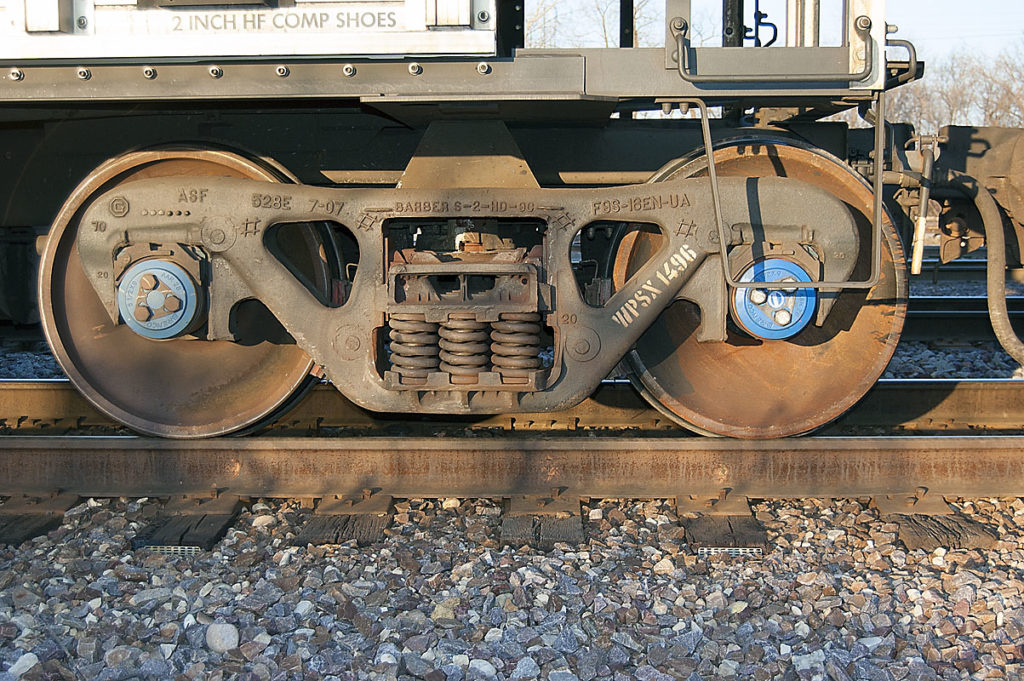
Two blue end caps for bearings made by Amsted Rail’s Brenco Inc. appear on a freight car truck at the Union Pacific’s Butler Yard in Wisconsin. Steve Sweeney Q What is the significance of the blue paint that I see on the rotating bearing caps on freight car wheelsets? – Tito Porfiri, Olney, Md. A […]
Read More…
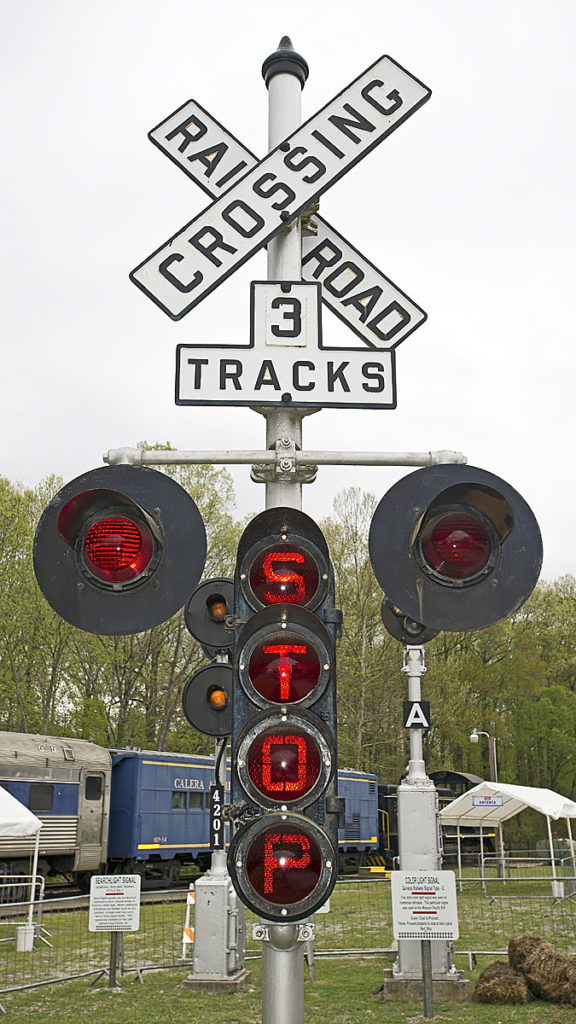
A less common crossing signal warned motorists of oncoming trains by blinking “stop.” Kevin King Q As a child in the 1950s and 1960s, I saw a number of railroad grade crossings on the Wabash that were protected by a row of vertical lights on the signal mast in addition to the standard red alternating […]
Read More…












